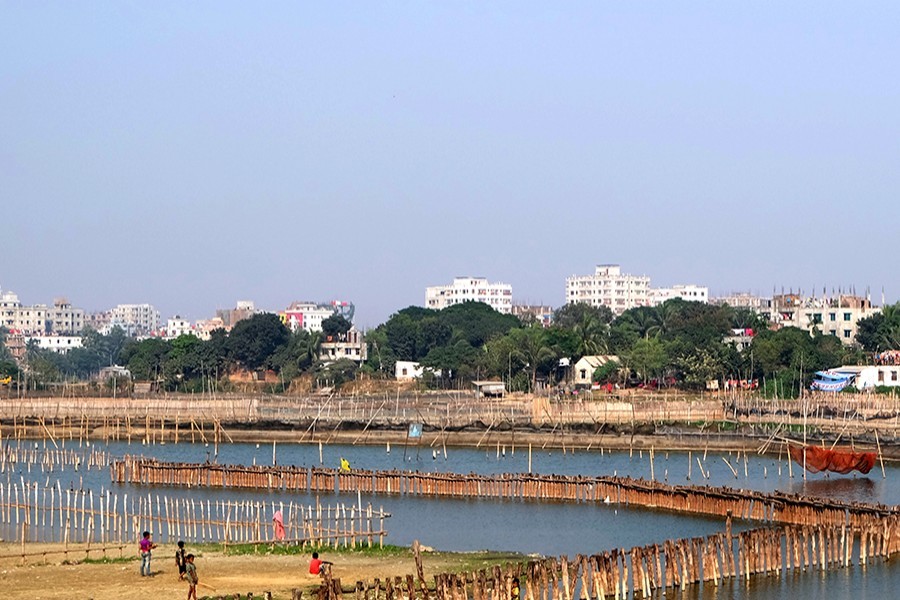
Published :
Updated :

That the country is losing its waterways is no secret. It is also no secret that these vital river and canal routes for movement of both humans and cargo are lost not so much to any freak of nature but predominantly to negligence, illegal earth filling, grabbing and a myriad other human interventions. However, information of the actual loss in terms of length and navigability of the waterways -- many of which trace their existence hundreds of years back - is upsetting. The State Minster for Shipping, at a question-answer session in parliament last week, informed the House that the country lost a total of 16,400 kilometres of waterways in sixty odd years. He also informed that there were once 24,000 kilometres of waterways across the country but now there were only 7,600 kilometres. The State Minister while conveying the information attributed the loss of waterways to gross negligence and lack of supervision of successive governments.
In a riverine country like Bangladesh with waterways crisscrossing most of the landscape, the importance of maintaining the waterways cannot be overemphasised. For hundreds of years, big rivers, canals, haors and vast swathes of wetlands have been providing numerous routes for both mechanised and non-mechanised vessels to navigate small and long distances. Businesses in parts of the country are still solely dependent on riverine transports, especially in the rainy season. Now that two-thirds of the inland waterways do not exist, it is clear that the problem is a serious one warranting urgent attention of all concerned. While non-navigability due to heavy sedimentation in the river channels is a known reason for loss of waterways, human acts are mainly responsible for shrinkage, clogging and even total obliteration of many canals and water bodies. Clearly, this has happened for decades and successive governments cared little to consider it a serious concern.
Dredging is of course the only way out to bring back navigability to the major river channels. Dredging is also important to protect coastal erosion through raising embankments alongside river banks. But it is unfortunate that dredging in this country is often seen as a mischievous act of those involved in the under-water activity. Besides, the job while being highly cost-intensive because of its being oil propelled, requires monitoring of the results in a transparent manner-which observers allege is hardly done. The common practice of dredging in Bangladesh is gathering up bottom sediments and disposing them at different locations downstream. This practice, understandably a flawed one, has done little to remove non-navigability in the river channels. It may be noted here that capital and maintenance dredging have undergone dynamic improvements in recent times with the introduction of high-tech trailing suction hopper dredgers and mighty cutter suctions. To make dredging effective, the authorities should procure such state-of-the-art dredgers. Along with clearing the river channels, the ongoing drive of the Bangladesh Inland Water Transport Authority (BIWTA) to free the canals and wetlands of unauthorised structures all over the country must continue.
The State Minister for Shipping has informed parliament that the government has a plan to reclaim 10,000 kilometre-long waterways by dredging 178 rivers. This, no doubt, is a timely move. There has to be a coordinated action plan among relevant agencies of the government to ensure that the targeted reclamation of waterways is done without fail.


 For all latest news, follow The Financial Express Google News channel.
For all latest news, follow The Financial Express Google News channel.